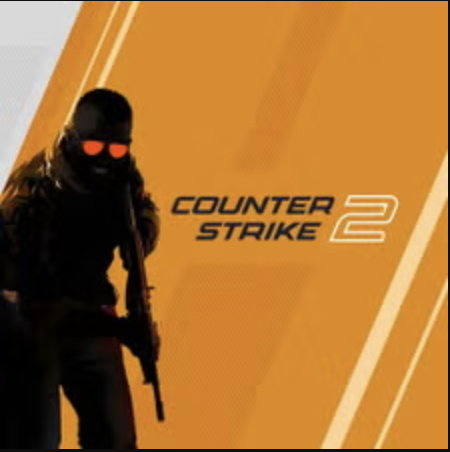Climbing Towers and Clearing Maps: How Ubisoft Popularized Open-World Tropes
Popular Now
 Valorant
Valorant
 Geometry Dash
Geometry Dash
 PUBG Mobile
PUBG Mobile
 Toca Boca World
Toca Boca World
 Auto X Drift Racing 3
Auto X Drift Racing 3
 Roblox
Roblox
 Garena Free Fire: Kalahari
Garena Free Fire: Kalahari
 Counter-Strike 2
Counter-Strike 2
 Candy Crush Saga
Candy Crush Saga
 Call of Duty
Call of Duty 
Ubisoft has long been a dominant force in the open-world gaming space, a genre they’ve helped define and, in many cases, revolutionize. From the historical playgrounds of Assassin’s Creed to the sprawling, chaotic landscapes of Far Cry, the French publisher has introduced, refined, or popularized a number of mechanics that have become industry-standard tropes. While often criticized for a lack of innovation and repetitive design, these mechanics have a rich history that has influenced a generation of developers. Here is a look at the most iconic Ubisoft-popularized mechanics and their lasting impact on the gaming world.
 The Radio Tower: Unlocking the Map
The Radio Tower: Unlocking the Map
Perhaps no mechanic is more synonymous with the “Ubisoft formula” than the climbing of towers to reveal sections of the map. While the concept of a map shrouded in fog of war existed long before, Ubisoft’s approach—making the act of revealing the map a physical, in-game activity—was a stroke of genius. It first appeared in Assassin’s Creed (2007), where players had to scale the tallest buildings and “synchronize” to reveal points of interest. This idea was refined and cemented into a core franchise mechanic in Far Cry 3 (2012), where players climbed rickety, dangerous radio towers to unlock huge portions of the map. This system turned a simple UI function into an engaging mini-game of traversal and exploration. The mechanic’s success was immediate and widespread, with countless other games adopting similar systems, including Horizon Zero Dawn, Middle-earth: Shadow of Mordor, and even the “Towers” in The Legend of Zelda: Breath of the Wild. While the trope has been parodied and critiqued for its repetitive nature, it remains an effective way to guide players and reward exploration in a massive open world.
The Outpost System: Clearing the Board
Another staple of the Ubisoft open-world experience is the clearing of enemy outposts. This mechanic, which allows players to strategically approach and eliminate a concentrated group of enemies to “liberate” a location, was also popularized by Far Cry 3. These outposts served as mini-sandbox puzzles, where players could use stealth, brute force, or environmental traps to complete their objective. Once an outpost was cleared, it would often become a safe zone, a fast-travel point, or an area for new side quests. The satisfaction of clearing a difficult outpost is a core component of the Far Cry experience, and it has been replicated in a variety of other games, from the enemy camps in Mad Max to the bandit strongholds in Ghost of Tsushima. The mechanic provides a clear sense of progress and accomplishment, turning a vast, intimidating map into a series of smaller, manageable victories.
 “Eagle Vision” and Tagging Enemies
“Eagle Vision” and Tagging Enemies
Before the days of drones and thermal vision, Ubisoft introduced a new way for players to identify and track enemies. In the original Assassin’s Creed, Altaïr’s “Eagle Vision” allowed him to highlight enemies and targets in the environment, making it easier to plan an approach. This idea was refined over the years and evolved into the ability to “tag” enemies, which became a core mechanic in games like Far Cry and Ghost Recon: Wildlands. By using binoculars, scopes, or drones, players could mark enemies, allowing them to track them through walls and see their patrol paths. This system, which provides valuable information without requiring players to expose themselves to danger, has become a staple of modern stealth and action games, including the Batman: Arkham series and even online shooters like Apex Legends and Overwatch, which use a simplified “pinging” system. This mechanic has fundamentally changed how players approach combat and stealth, turning a simple scouting action into a vital part of the gameplay loop.
Dynamic Parkour and Seamless Traversal
While Ubisoft did not invent parkour in games, they were pioneers in making it a seamless, core part of the gameplay experience. Starting with Prince of Persia: The Sands of Time, the studio demonstrated a commitment to fluid, acrobatic movement. This commitment reached its zenith with Assassin’s Creed, where the entire world was designed as a vertical playground. The ability to climb virtually any building, vault over obstacles, and chain together complex movements with a single button press was revolutionary for its time. This focus on fluid, organic traversal has influenced a wide range of games, from Dying Light to Infamous. By making the act of moving through the world fun and rewarding, Ubisoft turned its open worlds from a simple backdrop into a character in and of themselves. This legacy of traversal-focused design continues to this day, with Assassin’s Creed Shadows‘s parkour system being a major selling point for fans.
While Ubisoft’s reliance on these familiar mechanics has been a point of contention among some gamers, their influence on the open-world genre is undeniable. They have provided a foundational blueprint for how to design, populate, and monetize a massive digital world, and their legacy can be seen in countless titles from other developers. The “Ubisoft formula” may be a punchline to some, but it is also a powerful and effective design philosophy that has shaped the gaming landscape for over a decade.






 The Radio Tower: Unlocking the Map
The Radio Tower: Unlocking the Map “Eagle Vision” and Tagging Enemies
“Eagle Vision” and Tagging Enemies